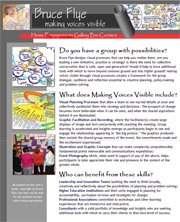If you ask for volunteers to participate in the design of a new building you’re likely to have plenty of takers, especially if your audience has a stake in it. Now, imagine asking that same group to help with a strategic plan – odds are the response will be much less enthusiastic. Why is that?
In my still-limited experience, it’s because architecture is generally approached with high expectations of creative endeavors, whereas when planning involves the non-physical the images that come to our minds include boring meetings, wasted time and nice books that end up on the shelf. For purposes of this discussion let’s narrow our field of reference: the setting is a university campus, the design involves a prominent new building and the planning involves the institution’s strategic plan.
What could the planning learn from the best of design?
- There’s an evident commitment up front: someone believes in what’s about to take place, money has been put on the table and there WILL be results. Can we say that about most strategic plans?

- Processes are in place to facilitate creative activity. The selection of designers is based on talent, for example. And what’s the favored mode of communication? Visual images! What do the best teams do? They “draw” our thoughts and dreams out of us right before our very eyes. How was your last strategic planning conducted?
- The act of construction requires a thorough assessment of context, as it is recognized that the building interacts with and depends upon its immediate environment. Think of what’s considered: soils, materials availability, weather patterns, local trades, traffic and sight lines. What was in the last environmental scan that your campus did? You did do one, right?
- In recent years the entire idea of context has taken an additional form that merits a bullet on its own, and that’s Sustainability, where higher levels of thought are given to the life of a structure and the demands that it – as well as its uses – will make on systems, resources and future generations. How would most university planning look different if we believed – especially in the public sector – that we had to sustain ourselves rather than assume someone else would carry the freight?
Let’s not be totally one-sided, however; what could design learn from the best planning practices?
- When planning is committed to discovery, generative processes are often used that forestall “problem-solving” in the interest of problem design. The result is a level of authenticity that creates shared visions and a belief in the possible outcomes.

- The resulting shared visions are maintained as a frame of reference throughout the work. Many design teams begin this way, but few can keep it alive for the duration. Architects become overwhelmed by tradespeople, the campus leadership that began the work gives way to bureaucrats, and contracts become inflexible barriers rather than the enabling tools intended. Before you know it, participation and collaboration are equated to herding cats, and the most important goals are to be “On Time and On Budget!”
- Planning can be an iterative process, continuously involving large groups. Agreed: the expense of design and construction dictate that iteration is eventually ended well before completion, but there is room for improvement. In an article entitled “ChangeIsNow,” AIArchitect describes how a disproportionate number of decisions are made late in design, when possibilities are constrained and mostly the “experts” are involved. The author suggests it is time to “shift the curve to the left.”
- Planning can actually use prototypes that can facilitate the early wins suggested by John Kotter. There is an opportunity to try something out, see if it works and either make adjustments or proceed with confidence. In most design projects, the building IS the prototype. What design practices are out there that will let us take an idea out for a spin?


No comments:
Post a Comment